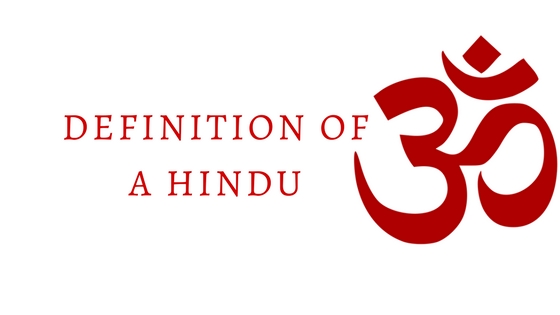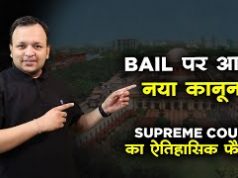Aapka Consultant Judgment Series- In this series, we are providing case analysis of Landmark Judgments of Hon’ble Supreme Court of India.
Sastri Yagnapurushadji and Ors. Vs. Muldas Bhudardas Vaishya and Anr.
AIR1966SC1119, 1967(69)BOMLR1
Hon’ble Judges/Coram: P.B. Gajendragadkar, C.J., K.N. Wanchoo, M. Hidayatullah, P. Satyanarayana Raju, and V. Ramaswami, JJ.
Decided On: January 14th, 1966
FACTS:-
The appellants were the followers of the Swaminarayan sect, also known as Satsangis. They apprehended that respondent no. 1, the President of Maha Gujarat Dalit Sangh at Ahmedabad intended to assert rights of non-Satsangi Harijans to enter the temple at Swaminarayan sect situated in Northern Diocese at Ahmedabad in exercise of legal rights conferred on them by Section 3 of the former Bombay Harijan Temple Entry Act, 1947. The case of the appellants was that the Swaminarayan sect represents a separate and distinct religious sect unconnected with Hindus and the Hindu religion and therefore, their temples were outside the purview of the said Act. In the alternative, they urged that the Act was ultra vires.
ISSUE:-
From a legal perspective, who is a Hindu and what is Hinduism?
JUDGMENT:-
Before this case came to the Supreme Court, both the Trial Court and the Bombay High Court had held that Swaminarayan sect is not a religious sect separate from Hinduism. The case of the appellants rested on four main arguments. First, Swaminarayan considered himself to be supreme God and as such any sect that believes in the divinity of Swaminarayan cannot be assimilated with the followers of Hinduism. Second, temples in suit had been established for the worship of Swaminarayan himself and not for the worship of traditional Hindu idols, thus showing that the Satsangis were a separate religious sect. Third, the sect propagated the ideal that the worship of any God other than Swaminarayan would be a betrayal of his faith. Fourth, the Acharyas adopted a procedure of “Initiation” which showed that on initiation, the devotee became a Satsangi and assumed a separate and distinct character as a follower of the sect.
To examine the contention of the appellants, the Court looked into the distinctive features of Hindu religion. Observing that it is difficult, if not impossible to define Hindu religion or adequately describe it, the Court described Hindu religion as a way of life. Quoting Dr Radhakrishnan, the Court found monistic idealism to be a distinguishing feature of Hindu philosophy. However, there are certain broad concepts which can be treated as basic to Hindu religion. One of them is the acceptance of the Vedas as the highest authority in religious and philosophical matters. Another would be the acceptance of the concept of the great world rhythm. Also, belief in rebirth and pre-existence is another such basic concept.
There are certain sections of the Hindu community which do not believe in the worship of idols, and as regards those sections which believe in it, their idols differ from community to community. The Hindu pantheon presents the spectacle of a very large number of Gods who are worshipped by different sections of the Hindus. From time to time saints and religious reformers attempted to remove from the Hindu thought and practices elements of corruption and superstition that led to the formation of different sects. If the teachings of these saints and reformers are studied, one would realize that beneath the diversion in their views there is a subtle kind of unity which keeps them within the sweep of Hindu religion.
The ultimate aim of Hindu religion and philosophy is Moksha or Nirvana, which represents the state of absolute absorption of the individual soul with the infinite. There is a great divergence of views on how to achieve this Moksha or Nirvana. Therefore Hinduism can safely be described as a way of life based on certain basic concepts. The Court mentioned the definition of Hinduism as given by Balgangadhar Tilak and observed the same as adequate and satisfactory. Tilak said: “Acceptance of Vedas with reverence; recognition of the fact that the means or ways to salvation are diverse and realization of the truth that the number of Gods to be worshipped is large, that indeed is the distinguishing feature of Hindu religion.”
After an analysis of the life of Swaminarayan and his teachings, the Court found the plea of the appellants to be entirely misconceived. Swaminarayan was a follower of Ramanuja, and the essence of his teachings was that everyone should follow the main Vedic injunctions of a god, pious, and religious life and should attempt to attain salvation by the path of devotion to Lord Krishna. Acceptance of the Vedas with reverence, recognition of the fact that the path of Bhakti or devotion leads to Moksha, and insistence on devotion of Lord Krishna unambiguously and unequivocally proclaim that Swaminarayan was a Hindu saint determined to remove corrupt practices from Hindu religion and to restore it to its original glory and purity. Whenever a saint or a religious reformer attempted to reform Hindu religion, a sect was born which was governed by its own tenets, but which basically subscribed to the fundamental notions of Hindu religion and Hindu philosophy. Worship of Swaminarayan in temples is not inconsistent with the beliefs of Hindu religion. Saints are honoured because the presence of divinity in their lives places them on the high pedestal of divinity itself. Satsang philosophy allows followers of other religions to receive the blessings of Swaminarayan’s teachings without insisting upon forsaking their own religions. The fact that the sect does not insist upon the actual process of proselytising on such occasions has no relevance in deciding whether the sect itself is a Hindu sect or not.
HELD:-
Swaminaryan sect is not a religion separate and distinct from Hindu religion and the temples belonging to the said sect do fall within the ambit of Section 2 of the Bombay Harijans Temple Worship (Removal of Disabilities) Act, 1958. Hindu religion is a way of life.
To Get Legal Opinion from Advocates/ Legal Experts, Please click here
To Get Legal Opinion from Retired Hon’ble Judges, Please click here












